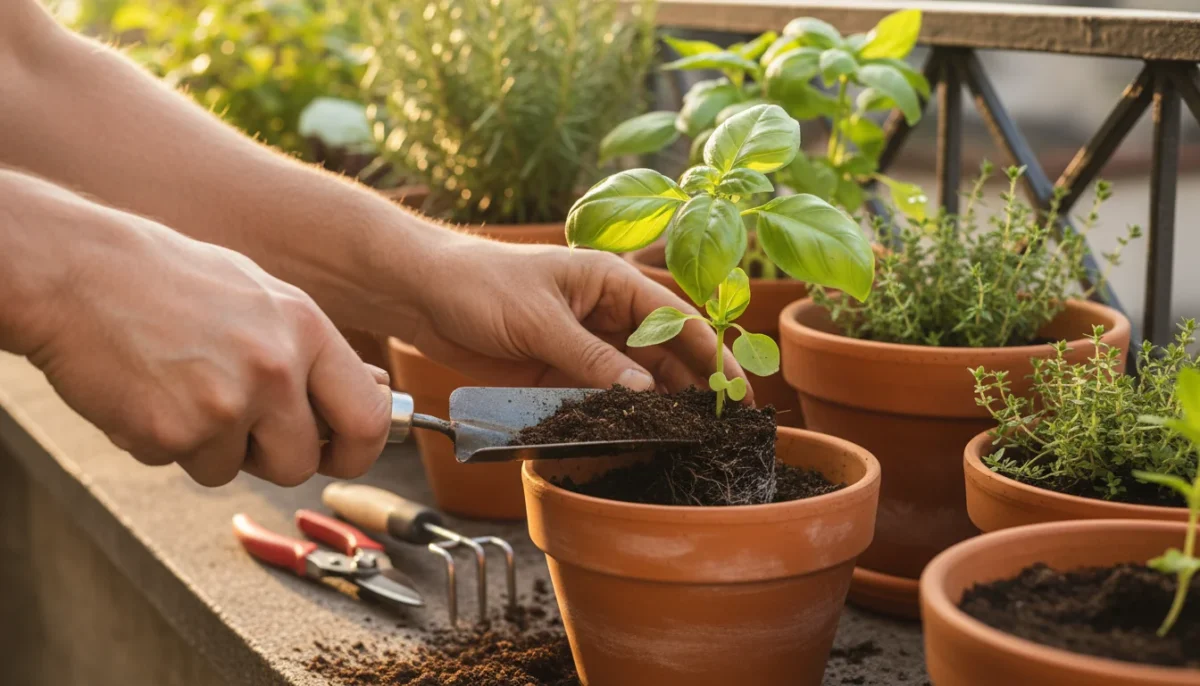Embarking on your gardening journey, whether on a tiny balcony, a cozy patio, or a small backyard, begins with selecting the right gear. Forget the overwhelming array of specialized equipment you might see online or in large garden centers. For successful small-space and low-maintenance gardening, you need compact, affordable, and incredibly practical tools.
This guide highlights 12 essential gardening tools that form the backbone of any beginner’s kit. We focus on durability, ease of use, and space-saving designs, ensuring your gardening efforts remain joyful, efficient, and never overwhelming. You will learn what each tool does, how to use it safely, and simple maintenance tips to keep your gear in top condition season after season. Let us equip you for success, making your small garden dreams a vibrant reality.
Disclaimer: Follow manufacturer instructions and local regulations. Wear appropriate protection, store blades safely, and keep tools away from children and pets.
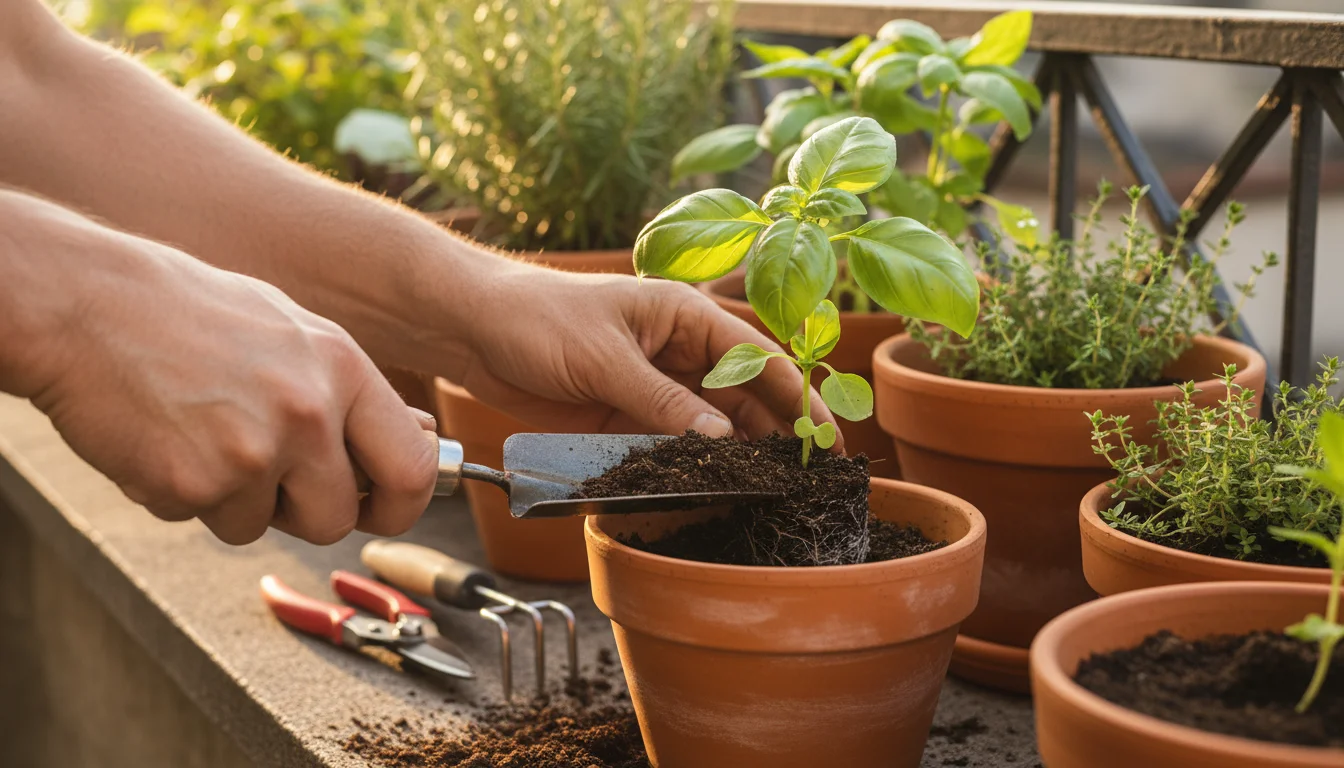
Your Essential Hand Tool Kit
Your hands are your primary gardening tools, but a few well-chosen hand tools amplify your capabilities significantly. These compact, must-have tools handle a variety of tasks in tight spaces and containers, forming the core of your essential gardening gear.
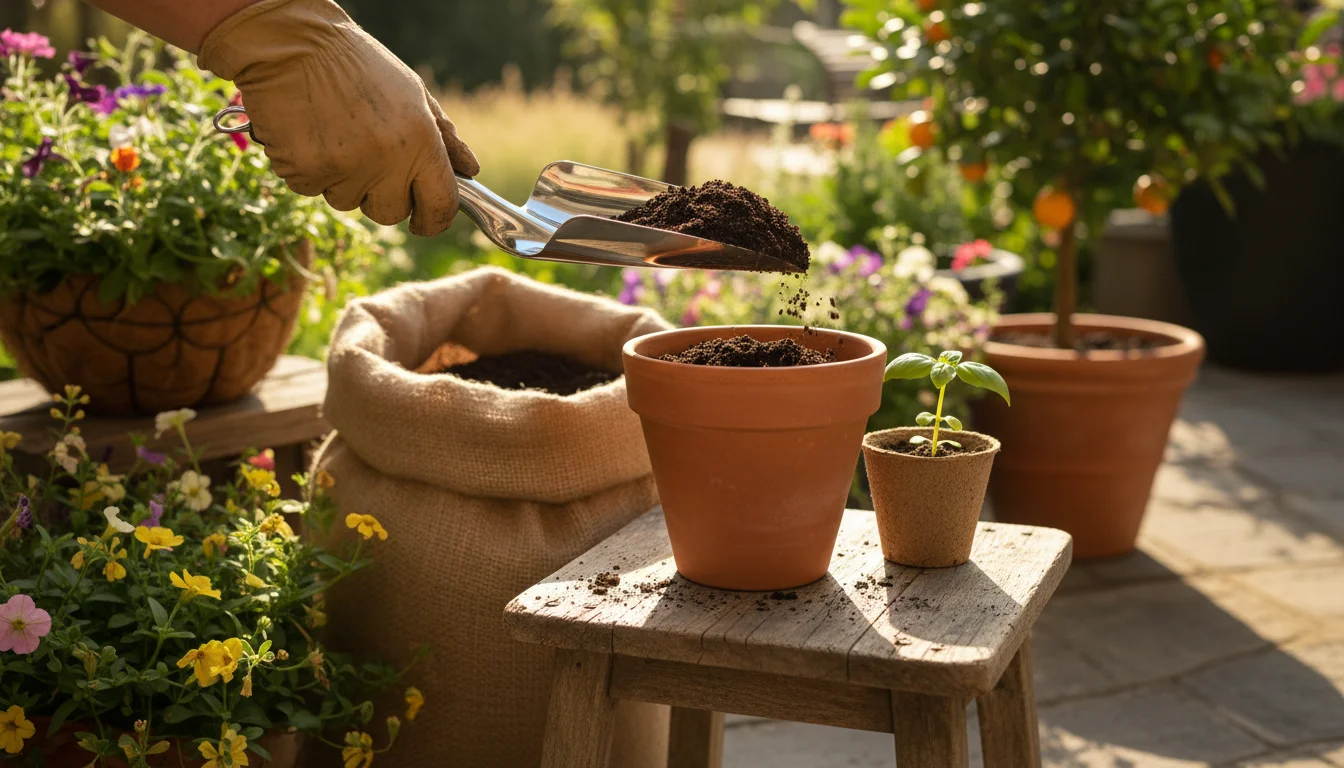
1. Hand Trowel
A hand trowel is your most versatile digging tool. Its scoop-shaped blade and handle allow you to dig small holes for planting seedlings, transfer soil to pots, mix amendments into existing soil, and even break up minor clumps of earth. Look for a trowel with a sturdy, one-piece construction where the blade extends into the handle, reducing the risk of breakage. A stainless steel blade resists rust and cleans easily, offering a longer lifespan. Ergonomic handles, often padded or shaped for comfort, reduce hand fatigue during extended use. Choose a trowel that feels balanced in your hand.
- Practical Use: To plant a small herb or flower, dig a hole slightly larger than the plant’s root ball using your trowel. Place the plant in the hole, then backfill with soil, gently firming it around the base.
- Maintenance: After each use, wipe off soil and debris. If the blade accumulates sap or rust, scrub it with a wire brush and warm, soapy water. Dry it thoroughly before storing.
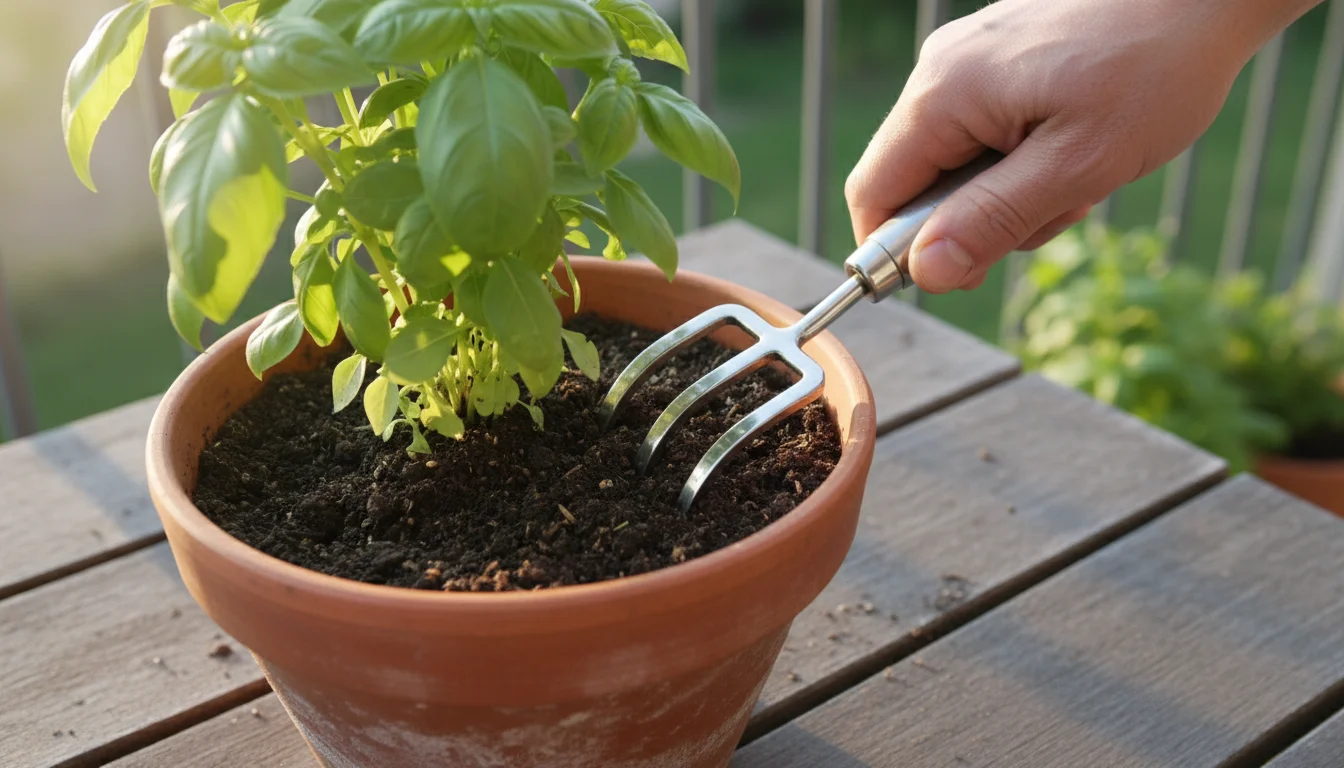
2. Hand Fork (Cultivator)
Often resembling a smaller, sturdier kitchen fork, a hand fork, also known as a hand cultivator, helps you aerate soil, loosen compacted earth, and gently mix compost or fertilizer into your containers or raised beds. Its prongs effectively break up clods of dirt without disturbing delicate roots too much. This tool is invaluable for maintaining healthy soil structure, especially in pots where soil can become dense quickly. Opt for a hand fork with strong, rigid tines that will not bend under pressure. Stainless steel or forged steel offers superior strength and corrosion resistance.
- Practical Use: To aerate a potted plant, gently insert the hand fork into the soil a few inches from the stem, wiggling it to loosen the soil without damaging main roots. Repeat this action around the pot.
- Maintenance: Clean soil from the tines after each use. A stiff brush helps remove stubborn dirt. Dry completely before storing to prevent rust.
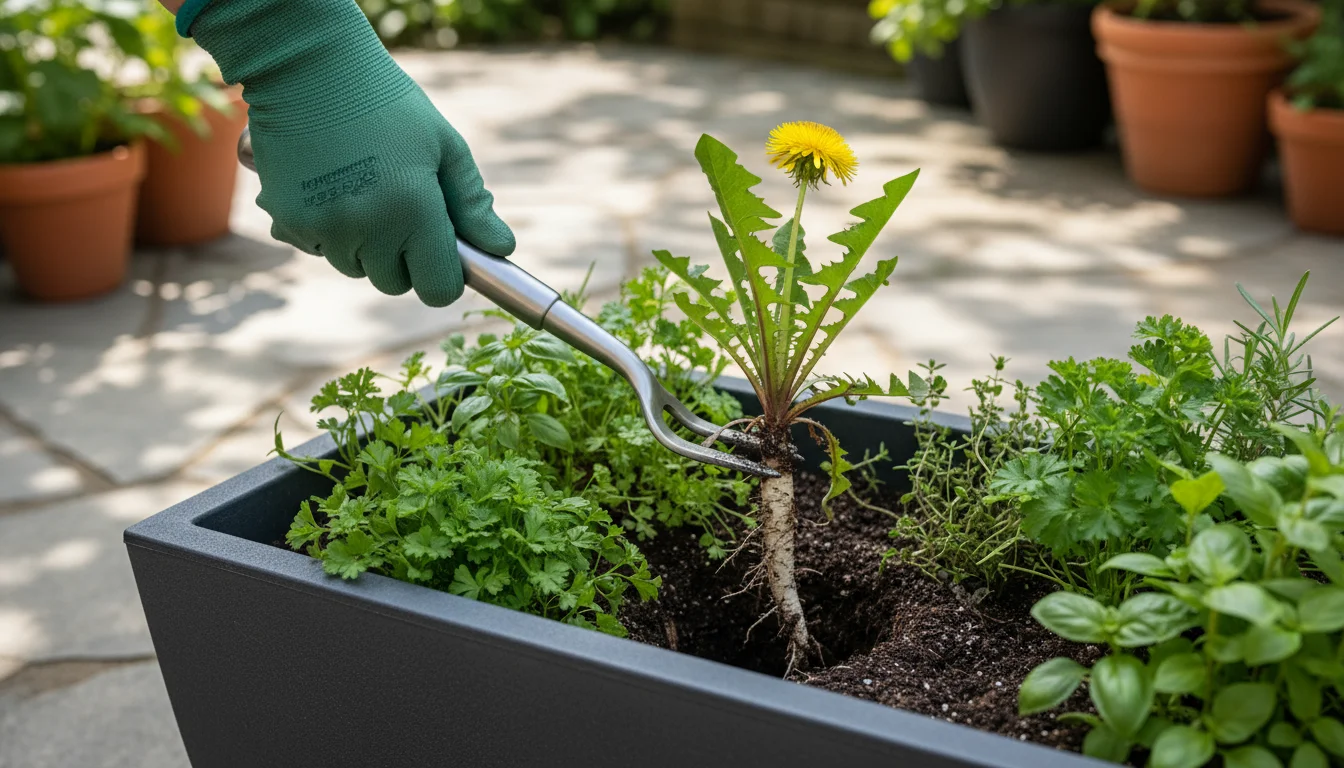
3. Weeder (Dandelion Tool)
Weeds compete with your plants for nutrients, water, and sunlight, making effective removal crucial for small gardens. A weeder, sometimes called a dandelion tool, features a narrow, often forked or V-notched head designed to penetrate deeply into the soil and pry out weeds, taproot and all. This design minimizes disturbance to surrounding plants. Using a specialized weeder ensures you remove the entire weed, preventing regrowth. Look for a tool with a comfortable grip and a strong shaft that provides good leverage, as you often need to apply force. Stainless steel heads are ideal for durability and rust resistance.
- Practical Use: For a stubborn dandelion, insert the weeder alongside the taproot as deep as possible. Use the shaft as a lever, pushing down on the handle to lift the weed and its root system out of the soil.
- Maintenance: Clean off soil after each use. Ensure no plant material remains stuck in the fork. Dry well before storage.
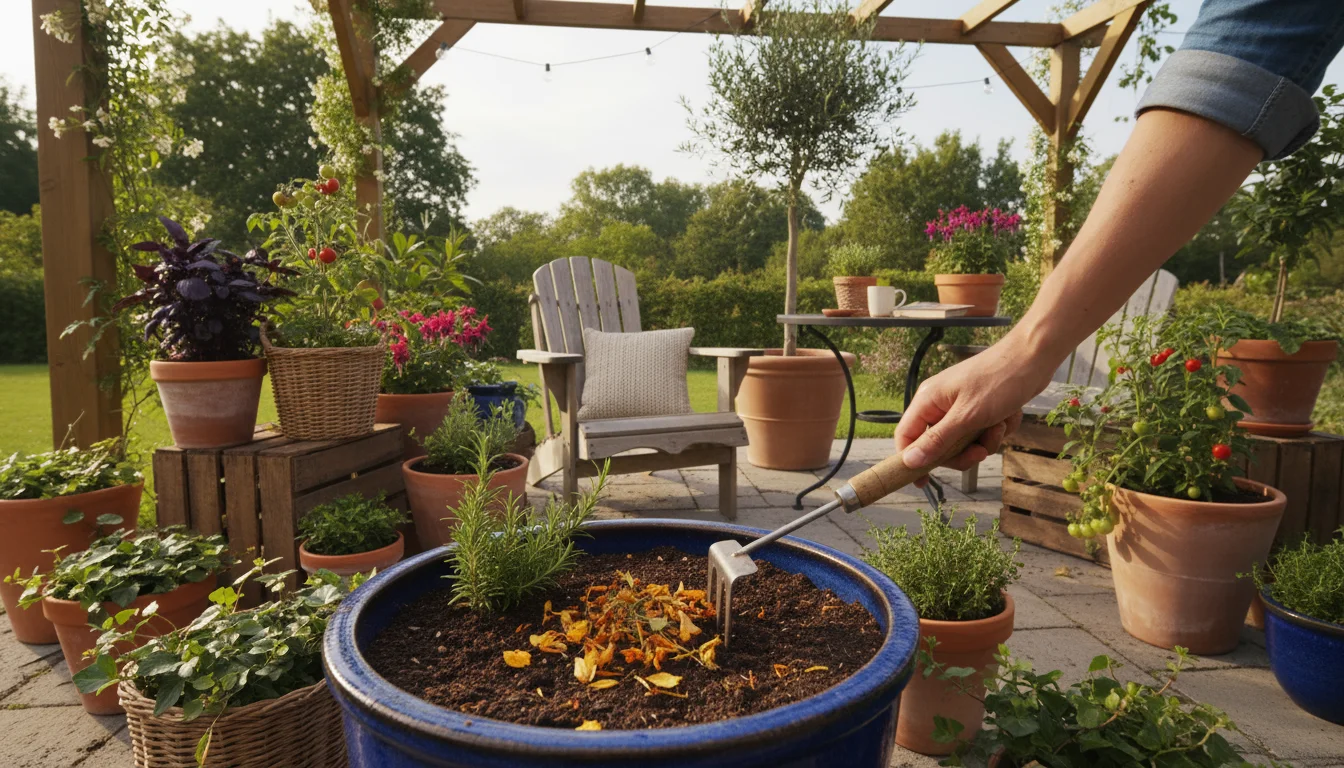
4. Small Garden Rake/Hand Rake
While a full-sized rake is impractical for small spaces, a small garden rake or hand rake is incredibly useful for tidying up. Its compact size makes it perfect for clearing fallen leaves, small branches, or spent blooms from containers, raised beds, or tight corners of your patio. You can also use it to gently smooth the surface of the soil after planting or weeding. Look for a hand rake with sturdy tines, either metal or durable plastic, and a comfortable handle. Some models feature adjustable heads, allowing you to narrow or widen the tines for different tasks or storage.
- Practical Use: To clear debris from a container garden, gently rake the surface, gathering leaves and spent flowers into a small pile. Dispose of the organic matter in your compost bin or green waste.
- Maintenance: Remove any tangled debris from the tines. Wash and dry thoroughly, especially if using a metal rake, to prevent rust.
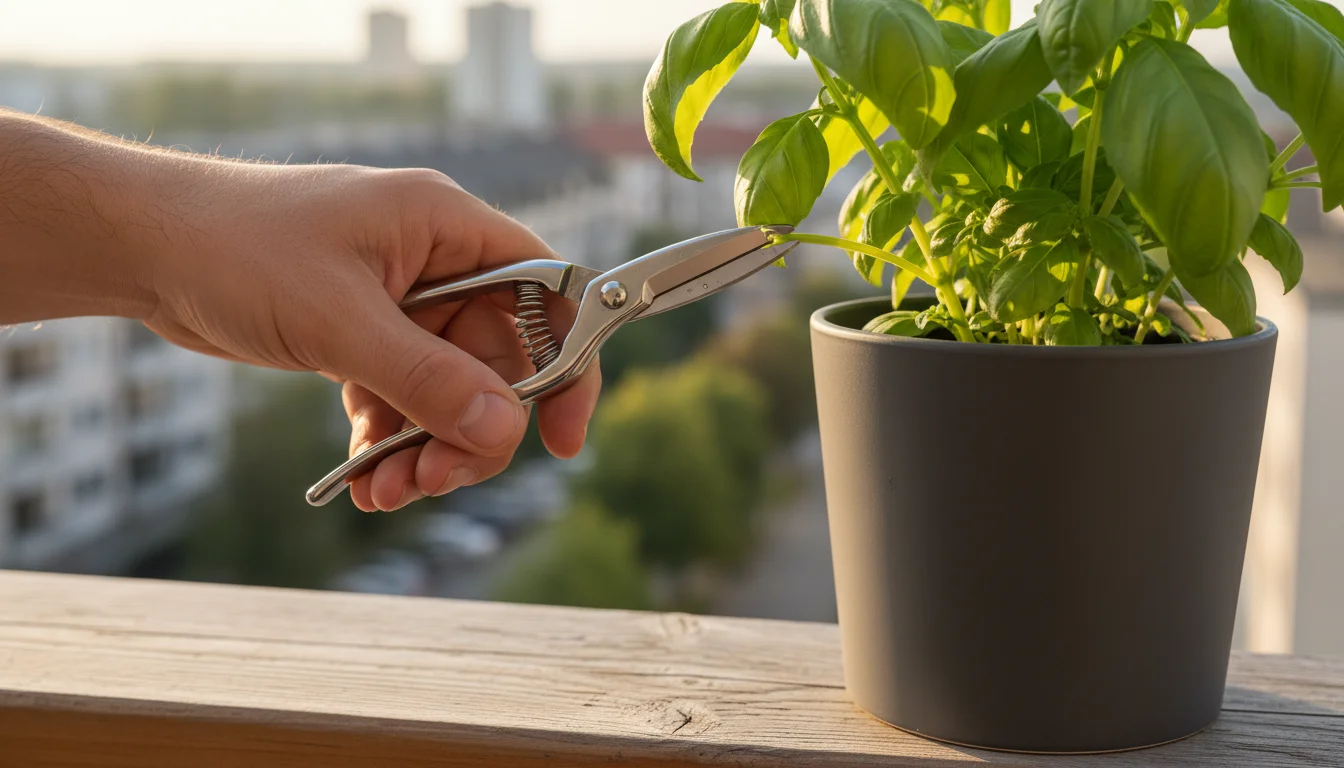
Precision Cutting and Pruning
Pruning maintains plant health, encourages growth, and shapes your plants, especially vital in compact gardens where every inch counts. Having the right cutting tools ensures clean cuts, which are crucial for quick healing and preventing disease. These are some of the best garden tools for precise plant care.
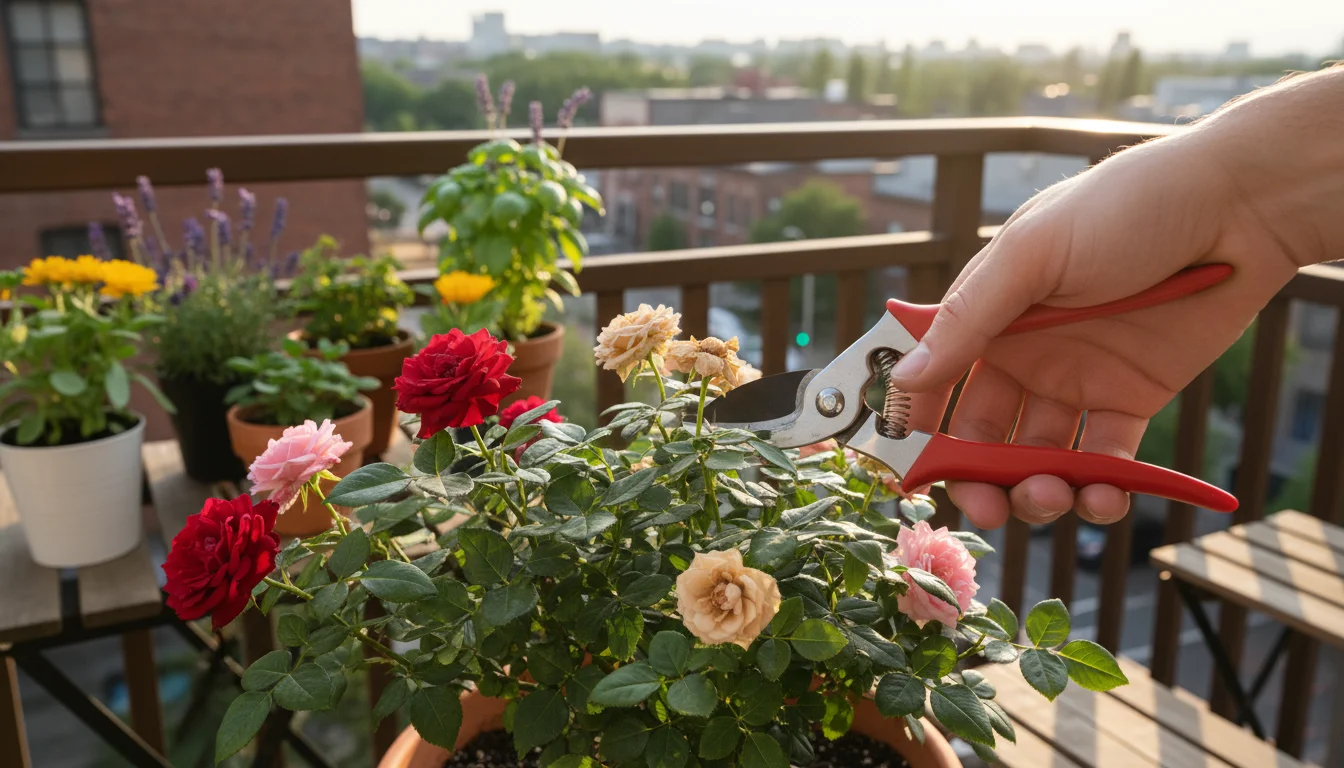
5. Bypass Pruners
Bypass pruners are the workhorse of your cutting tools. They operate like scissors, with two curved blades that slice past each other, making clean, precise cuts. These are ideal for live stems, as they cause minimal crushing and facilitate faster healing. Use bypass pruners for deadheading flowers, trimming small branches, shaping shrubs, and harvesting vegetables or fruits. When selecting pruners, prioritize a sharp, durable blade, often high-carbon steel, and a comfortable grip. A safety lock mechanism is essential for secure storage and to prevent accidental cuts. Most bypass pruners handle stems up to 3/4 inch in diameter.
- Practical Use: To prune a rose bush, locate a stem you wish to remove. Position the pruners with the cutting blade facing the plant, making your cut about 1/4 inch above an outward-facing bud or leaf node. Make a clean, angled cut to allow water to shed easily.
- Safety Tip: Always keep the safety lock engaged when not actively cutting. Wear sturdy gloves to protect your hands. Keep fingers clear of the blades.
- Maintenance: Clean blades with rubbing alcohol after pruning each plant to prevent disease spread. Sharpen blades regularly for optimal performance. Learn more about cleaning and sharpening your tools from the Oregon State University Extension Service.
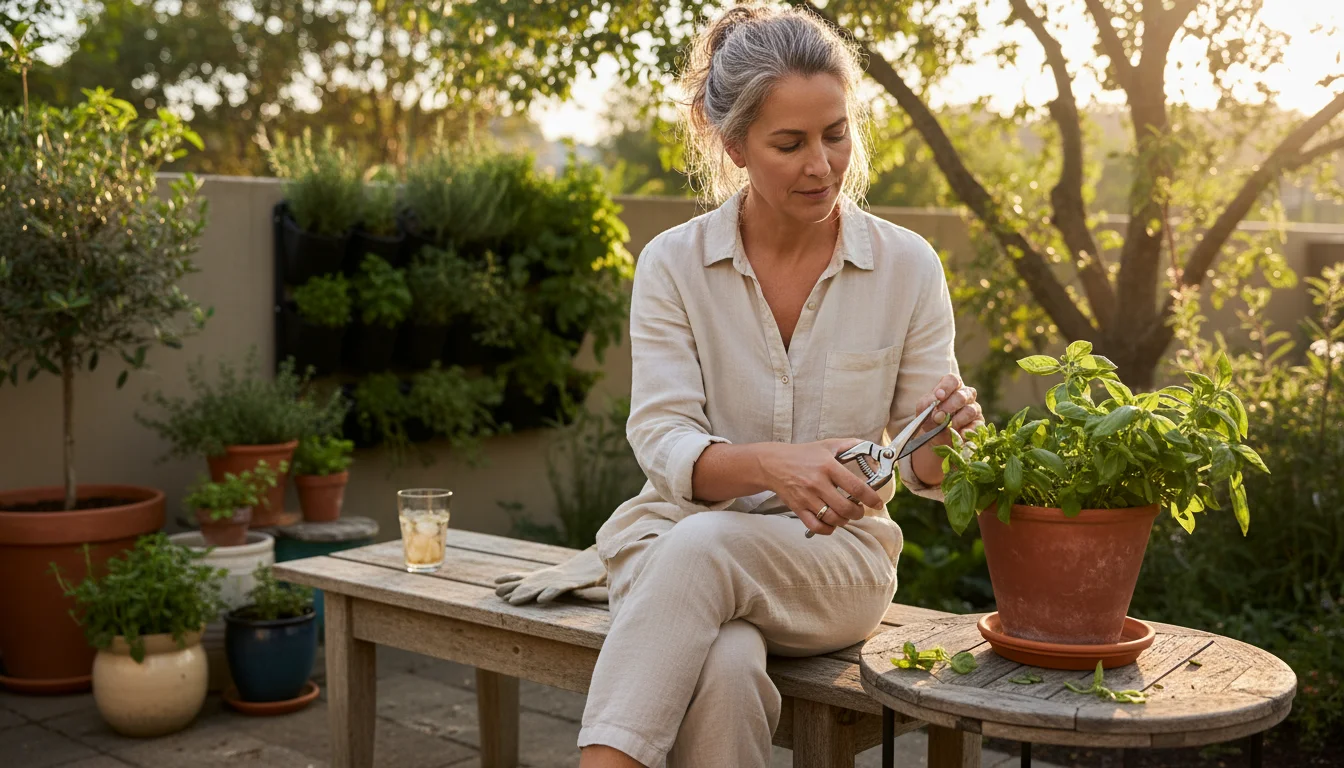
6. Garden Snips/Herb Snips
For more delicate tasks than bypass pruners, garden snips or herb snips are indispensable. These smaller, lighter tools have fine, sharp blades perfect for harvesting herbs, deadheading small flowers, trimming delicate seedlings, or snipping fine stems without crushing them. Their precision allows for careful work without damaging surrounding growth. Look for snips with spring-loaded handles for ease of use and a comfortable, ergonomic grip. Stainless steel blades are preferred for rust resistance and easy cleaning.
- Practical Use: When harvesting basil, use your snips to cut just above a leaf node, encouraging bushier growth. For deadheading, snip off faded blooms at the base of their stem.
- Maintenance: Rinse blades after use, especially if you have been cutting sticky sap or herbs. Dry thoroughly. A quick wipe with an oiled cloth helps prevent rust.
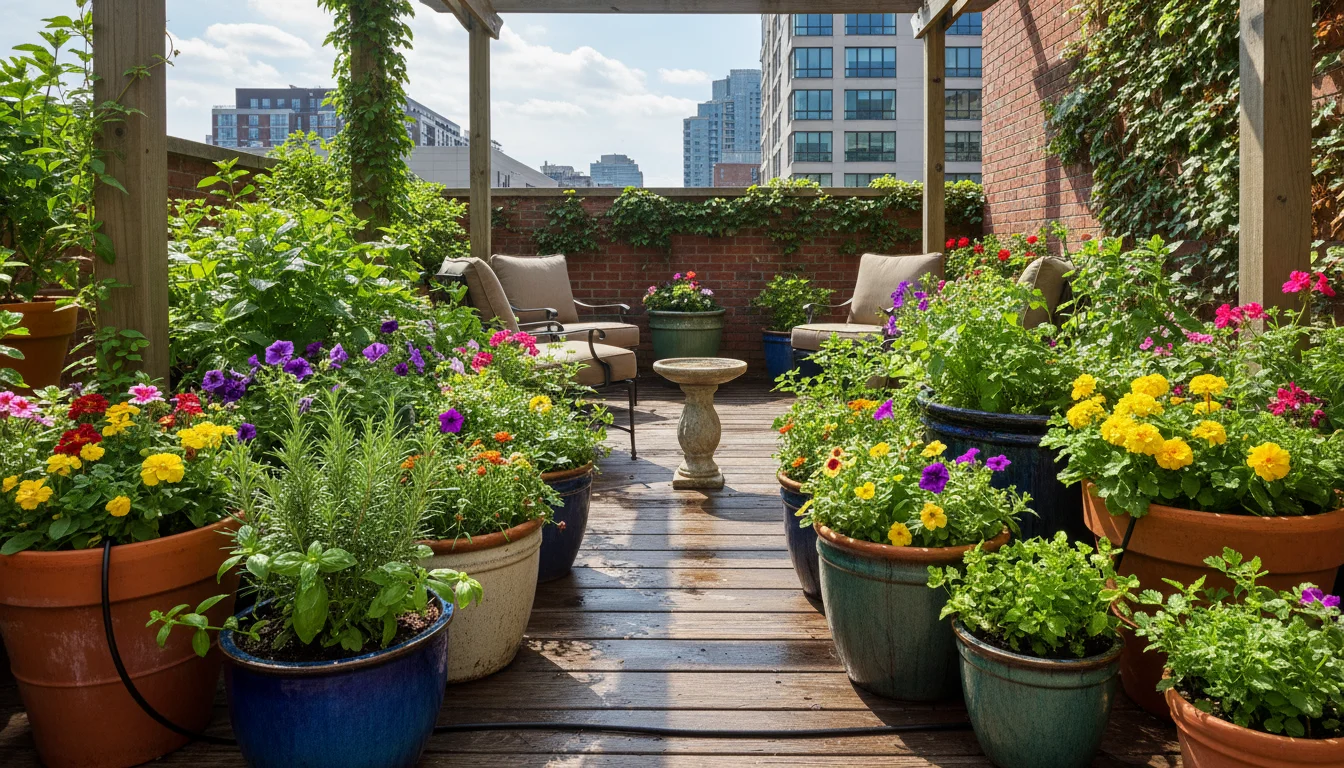
Smart Watering Solutions
Water is life for your plants, and efficient watering is key to low-maintenance gardening. These essential gardening gear items help you deliver hydration effectively, reducing waste and ensuring healthy plant growth, especially critical in small-space gardening where containers can dry out quickly.
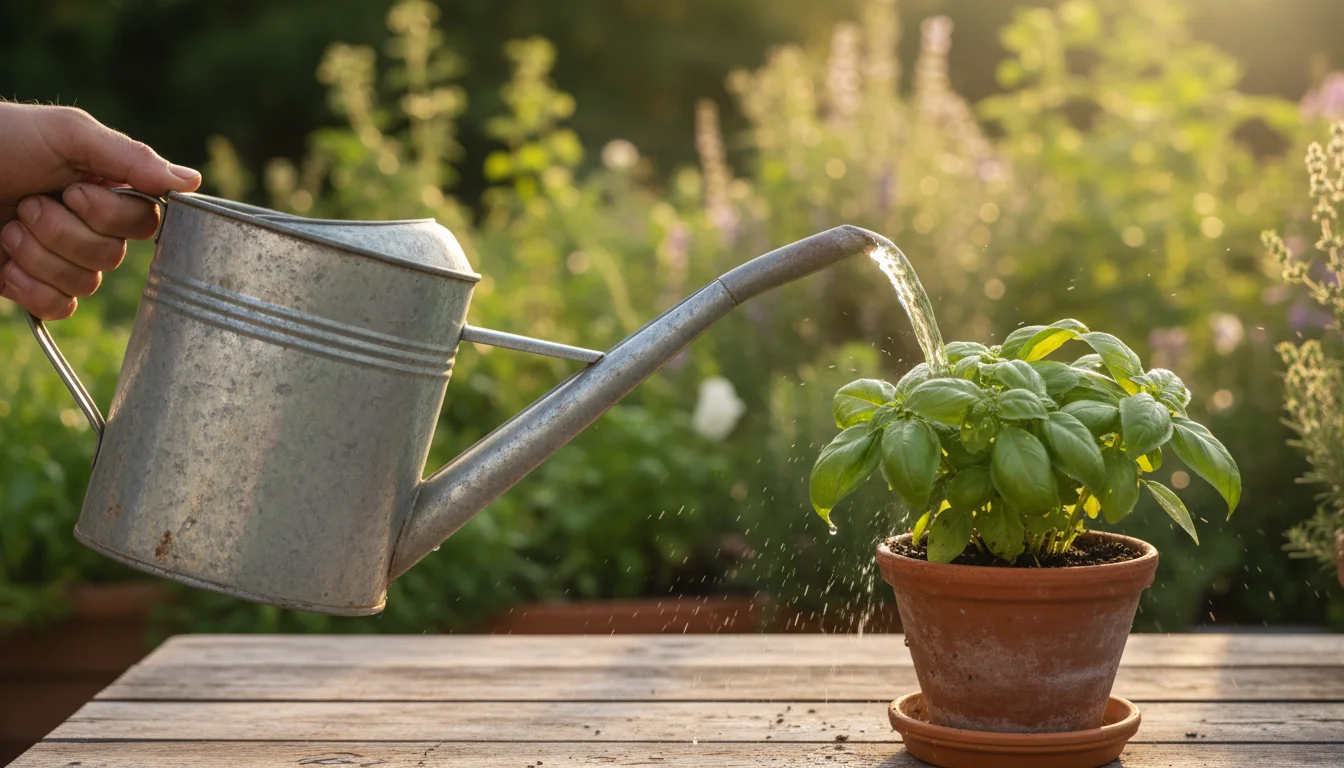
7. Watering Can
A good watering can is fundamental for any small garden. It allows you to deliver water directly to the soil, minimizing waste and preventing moisture from sitting on leaves, which can lead to fungal diseases. Choose a watering can sized appropriately for your garden. For balconies or patios, a 1-2 gallon capacity is often sufficient, providing enough water without being too heavy to carry. Look for a long, slender spout for precise watering at the plant base and a removable rose (sprinkler head) for gentle, even watering of seedlings or delicate plants. Durable plastic or galvanized metal options are common.
- Practical Use: Always water the soil directly, not the leaves. For potted plants, water slowly until you see water draining from the bottom. This indicates the soil is thoroughly moistened. For delicate seedlings, use the rose attachment to avoid dislodging them. Find more watering tips from the Missouri Botanical Garden.
- Maintenance: Rinse your watering can periodically to prevent algae buildup. Store it upside down or on its side to drain any remaining water, discouraging insect breeding.
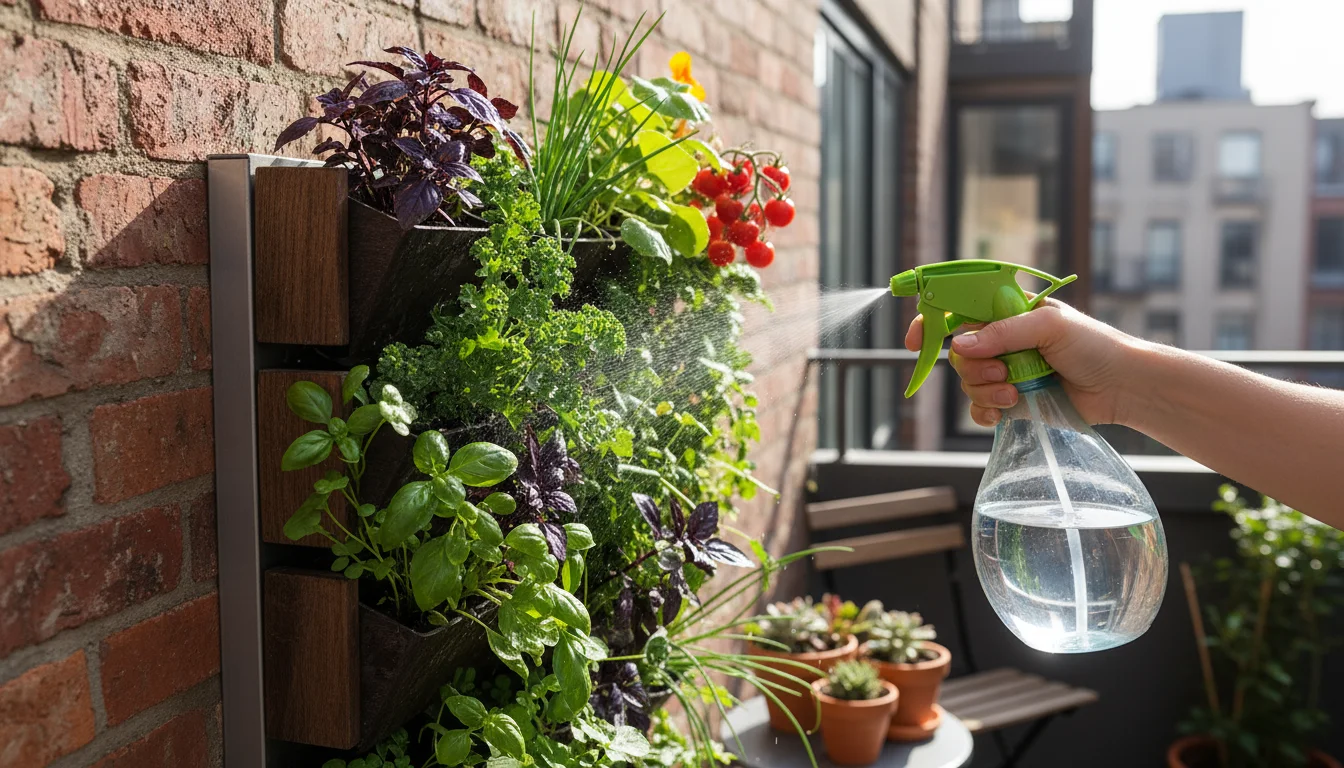
8. Spray Bottle
A simple spray bottle offers versatility beyond basic watering. It is excellent for misting humidity-loving plants, applying organic pest control solutions (like insecticidal soap), or delivering foliar feeds directly to plant leaves. Choose a durable plastic bottle with an adjustable nozzle, allowing you to switch between a fine mist and a direct stream. A comfortable trigger mechanism is important for ease of use.
- Practical Use: For misting, fill with plain water and spray a fine mist over your plants, especially during dry periods. When applying organic pest sprays, always follow the product’s dilution instructions carefully. Spray both the top and underside of leaves.
- Maintenance: Rinse the bottle and nozzle thoroughly with water after each use, especially if you have used any solutions other than plain water. This prevents clogging and chemical residue buildup.
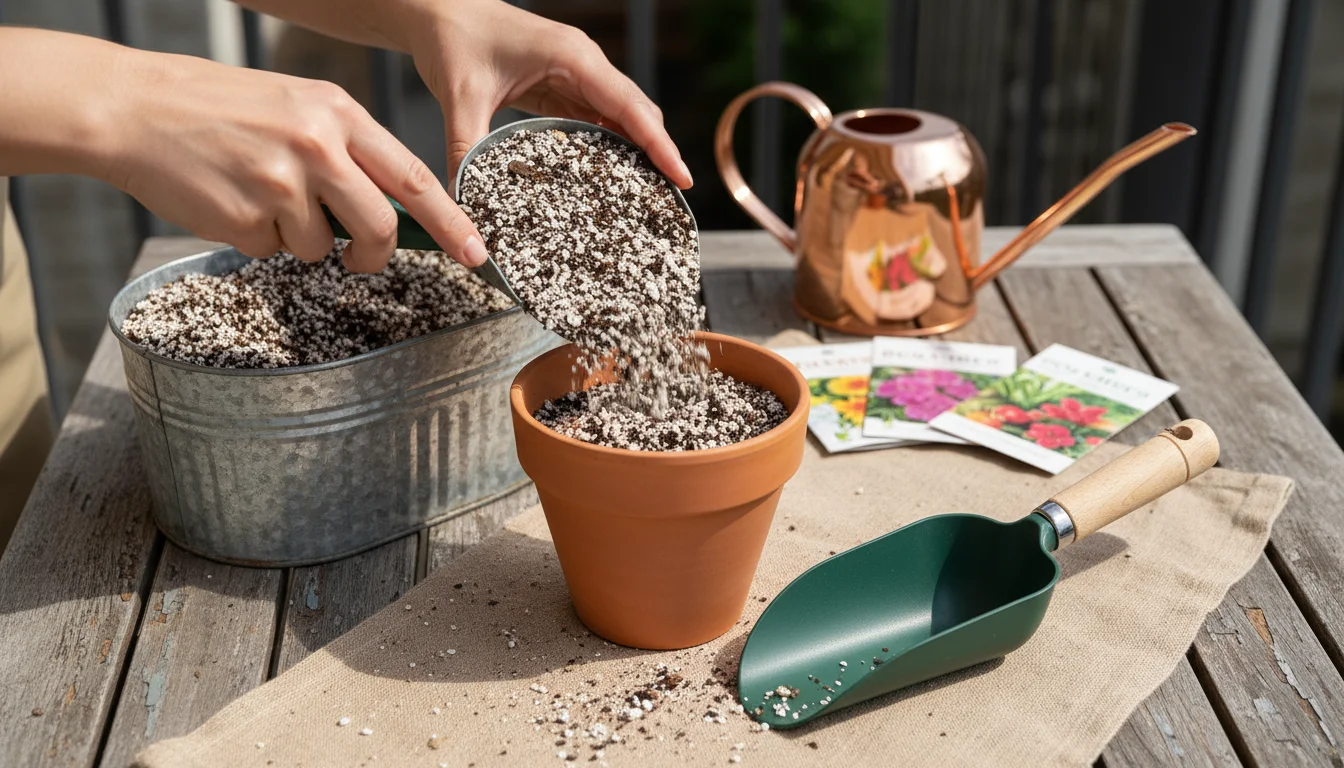
Soil and Potting Aids
Working with soil and potting mixes can be messy, but the right tools make the process cleaner and more efficient. These simple items are invaluable for managing your growing medium.
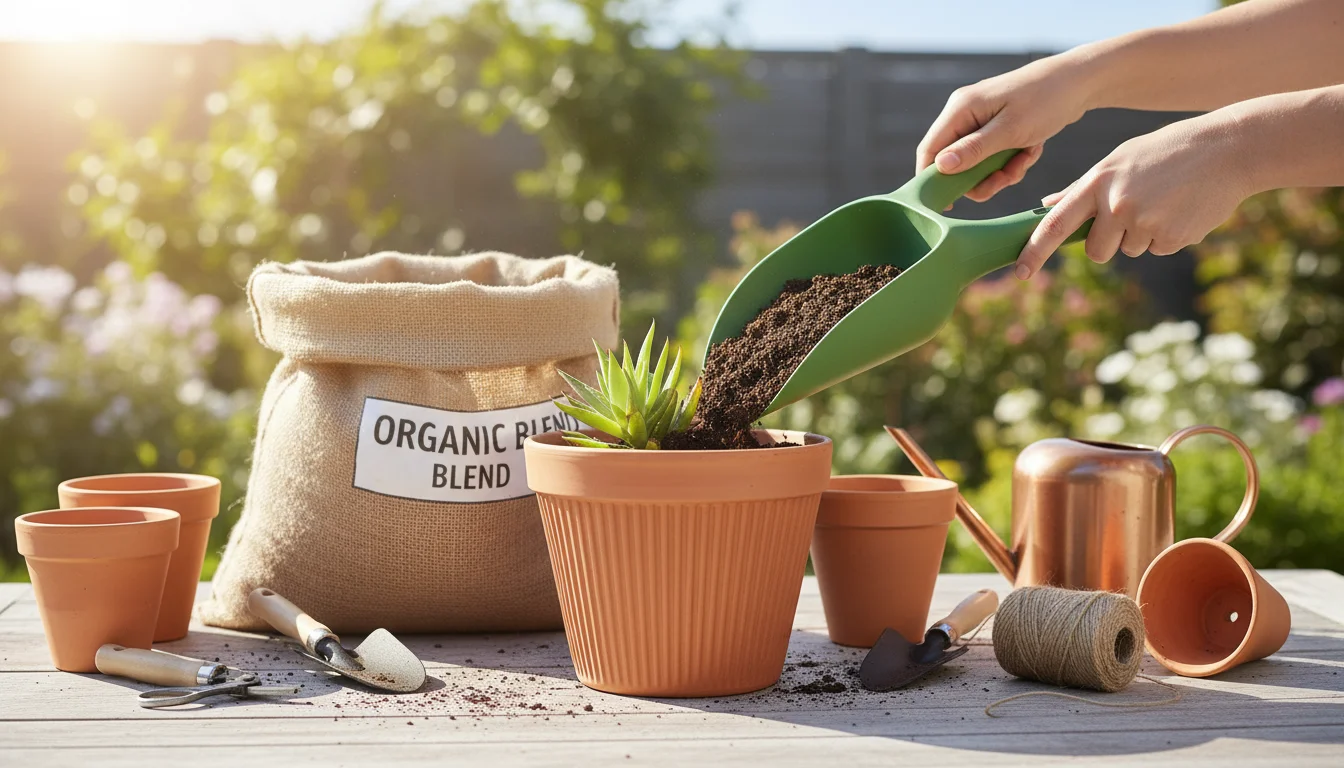
9. Potting Scoop/Hand Scoop
A potting scoop, often a large, durable plastic or metal scoop, makes transferring potting mix from a bag to a container effortless and mess-free. Its generous size means fewer trips back to the bag, and its shape prevents spills, keeping your gardening area tidy. Some scoops include measurement markings, which are helpful when mixing your own soil blends or adding amendments. Look for a sturdy design that can handle moist, heavy potting mix without bending or cracking.
- Practical Use: To pot a new plant, hold the pot steady and use the scoop to fill it with potting mix, leaving about an inch of space from the rim. This prevents soil from spilling when you water.
- Maintenance: Wipe down or rinse your potting scoop after use to remove any clinging soil or residue. Store it clean and dry.
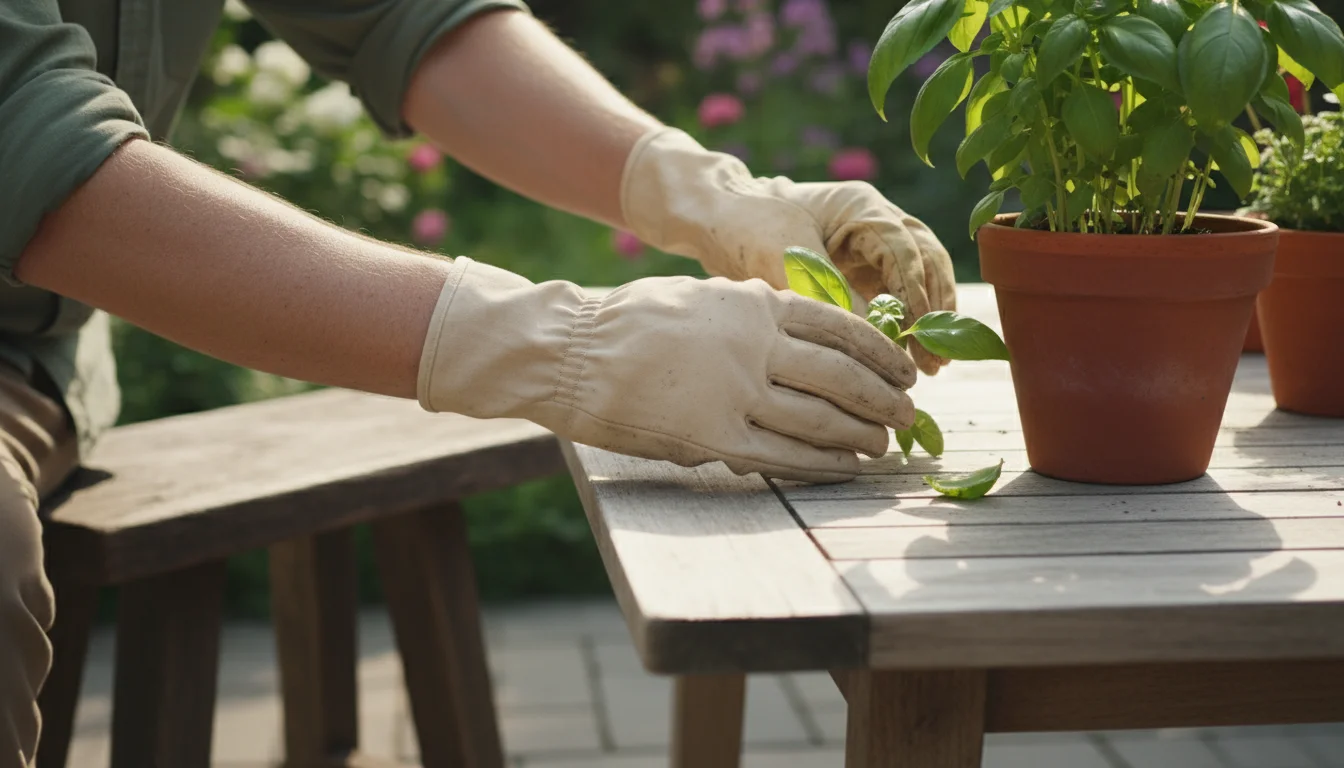
Personal Protection and Comfort
Gardening should be an enjoyable experience, not one that leaves you with scratches, blisters, or sore knees. Protecting yourself is a key part of smart gardening. These tools ensure your safety and comfort as you tend to your garden.
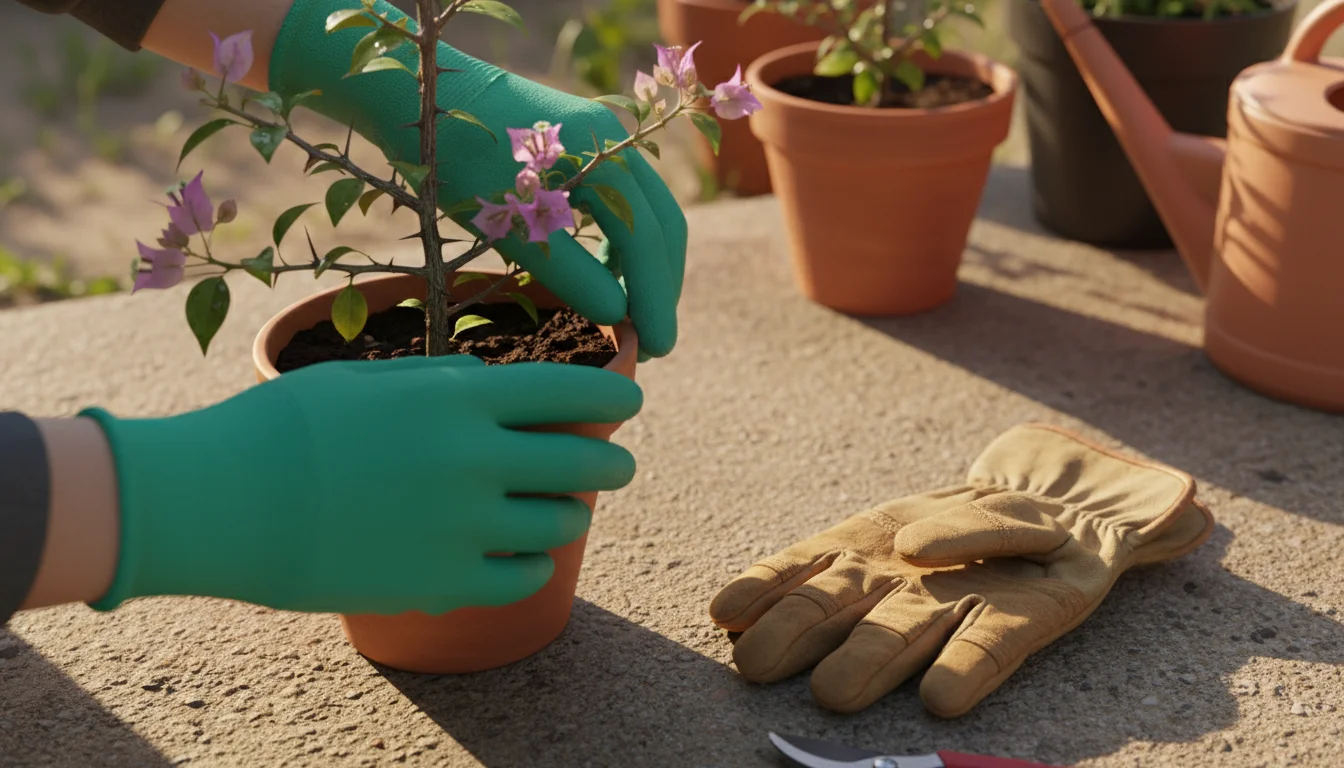
10. Garden Gloves
Protecting your hands is paramount. Garden gloves shield you from thorns, irritating plants, soil-borne bacteria, and blisters. The best garden tools for hand protection combine durability with dexterity. Look for gloves made from materials appropriate for your tasks. Nitrile-coated gloves offer excellent grip and water resistance while allowing dexterity for delicate work. Leather or thicker fabric gloves provide superior protection against thorns and rough surfaces. Ensure a snug fit that still allows for finger movement; ill-fitting gloves can cause more problems than they solve. For small-space gardening, you might want a lighter pair for everyday tasks and a tougher pair for prickly plants.
- Practical Use: Always wear gloves when handling thorny plants, working with soil (which can contain bacteria), or applying any gardening products. Ensure your gloves fit well so you can still grasp tools securely.
- Maintenance: Clean your gloves after use. Many fabric and nitrile gloves are machine washable. Leather gloves should be wiped clean and allowed to air dry away from direct heat.
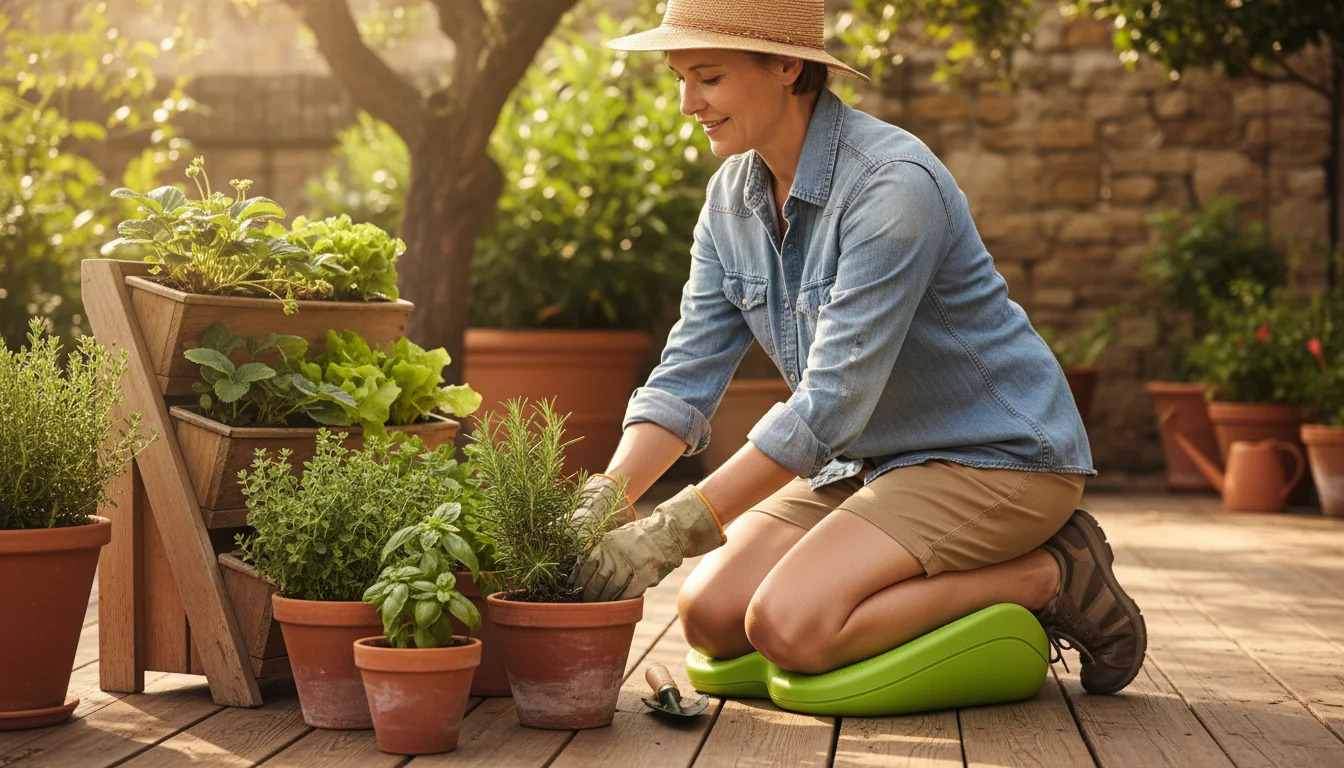
11. Kneeler/Kneeling Pad
Spending time on your knees in the garden can quickly become uncomfortable, leading to soreness or even injury. A kneeling pad or garden kneeler provides essential cushioning and protection, making tasks like planting, weeding, or harvesting much more pleasant. Look for a kneeler made from durable, thick foam that offers good support and resists compression. Some kneelers have handles for easy portability or are reversible, with one side for kneeling and the other for sitting. In small spaces, a compact, foldable design can be very convenient.
- Practical Use: Place the kneeler on the ground wherever you need to work close to your plants. Shift it as you move along your containers or small beds to maintain comfort and reduce strain on your knees and back.
- Maintenance: Wipe your kneeler clean of soil and debris after each use. Store it in a dry place to prevent mildew.
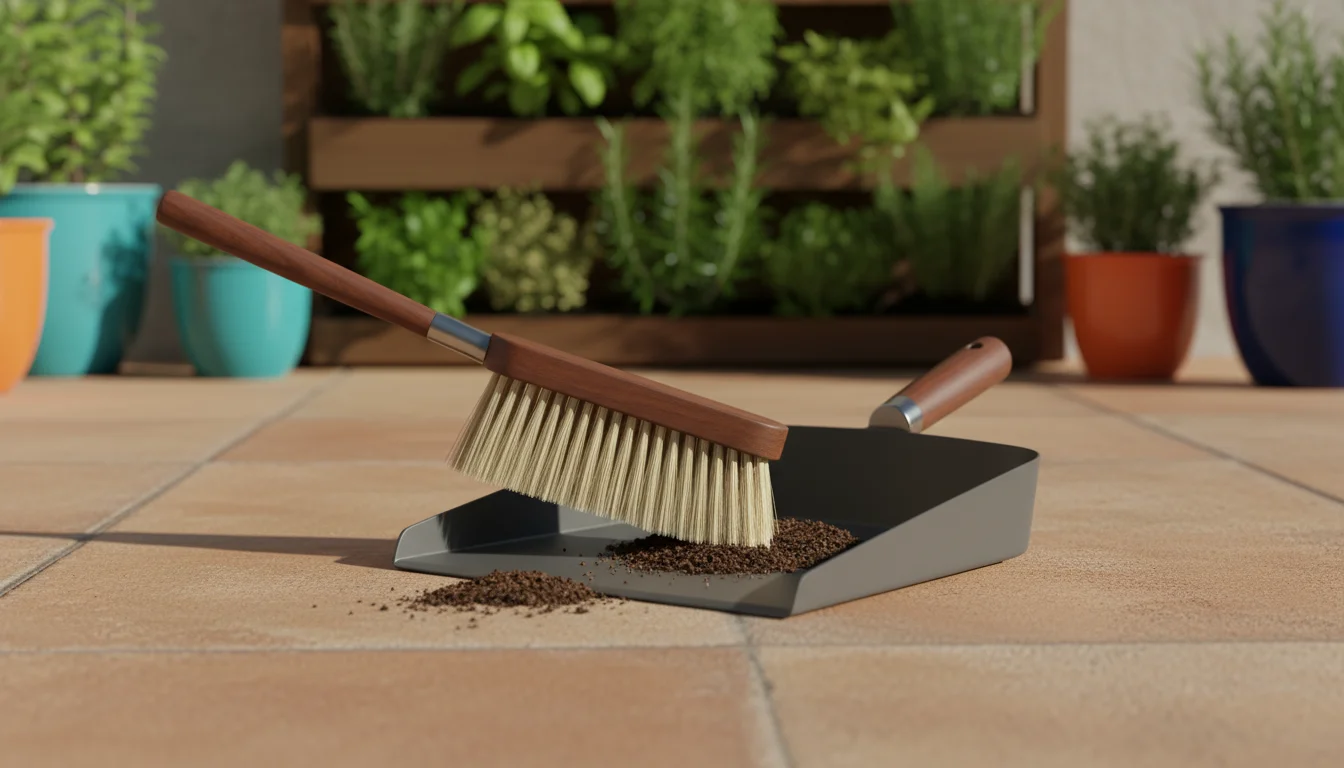
Keeping Tidy: Cleanup Tools
Gardening in small spaces means spills and messes are immediately noticeable. A quick cleanup tool helps maintain a clean, attractive, and functional gardening area.
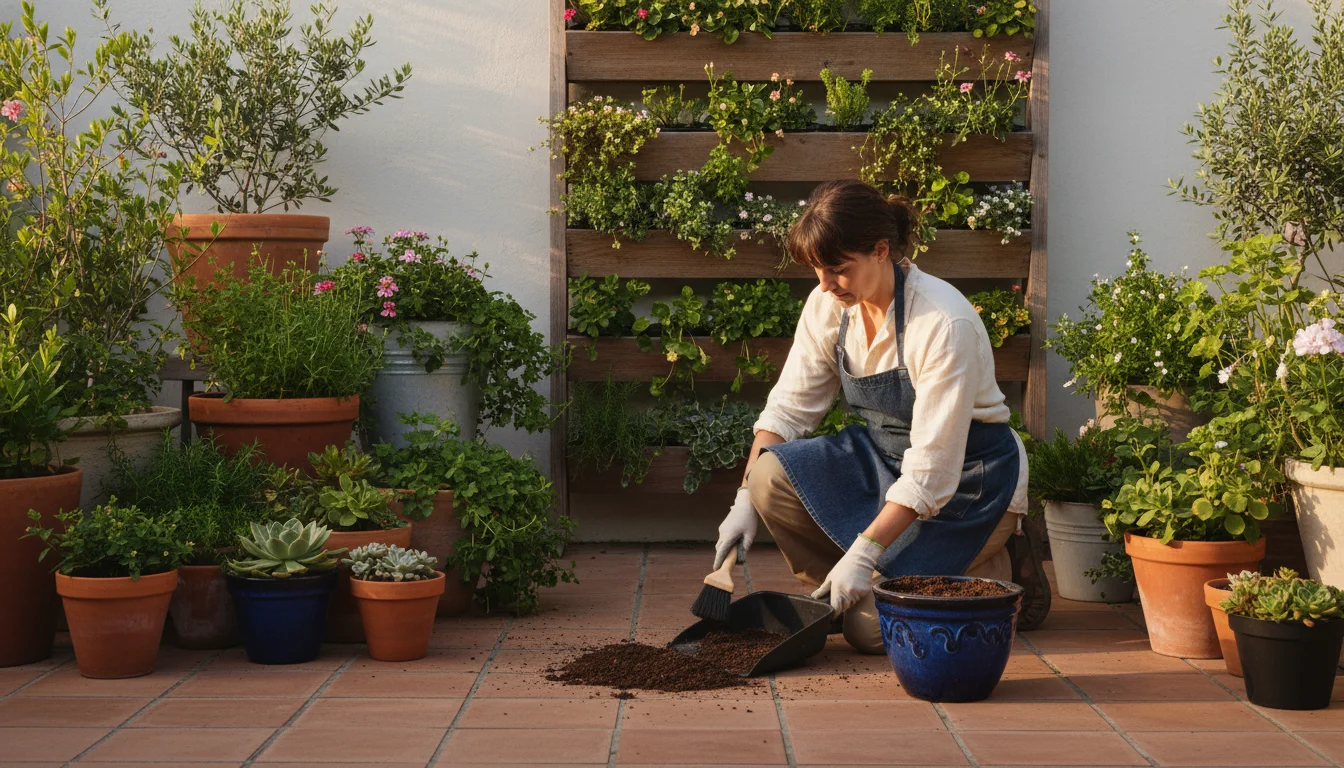
12. Small Brush and Dustpan
A small hand brush and dustpan set is surprisingly indispensable for small-space gardeners. It is perfect for sweeping up spilled potting mix, fallen leaves, errant soil from repotting, or general garden debris from your patio, balcony, or workstation. This keeps your area tidy, prevents slips, and deters pests attracted to organic waste. Look for a durable set that can handle both wet and dry debris effectively.
- Practical Use: After potting a plant, use the brush to sweep up any spilled soil directly into the dustpan. Then, empty the dustpan into your compost or a waste bin. Regularly sweep your gardening area to keep it neat and welcoming.
- Maintenance: Rinse the brush and dustpan with water to remove any clinging soil. Allow them to dry completely before storing.
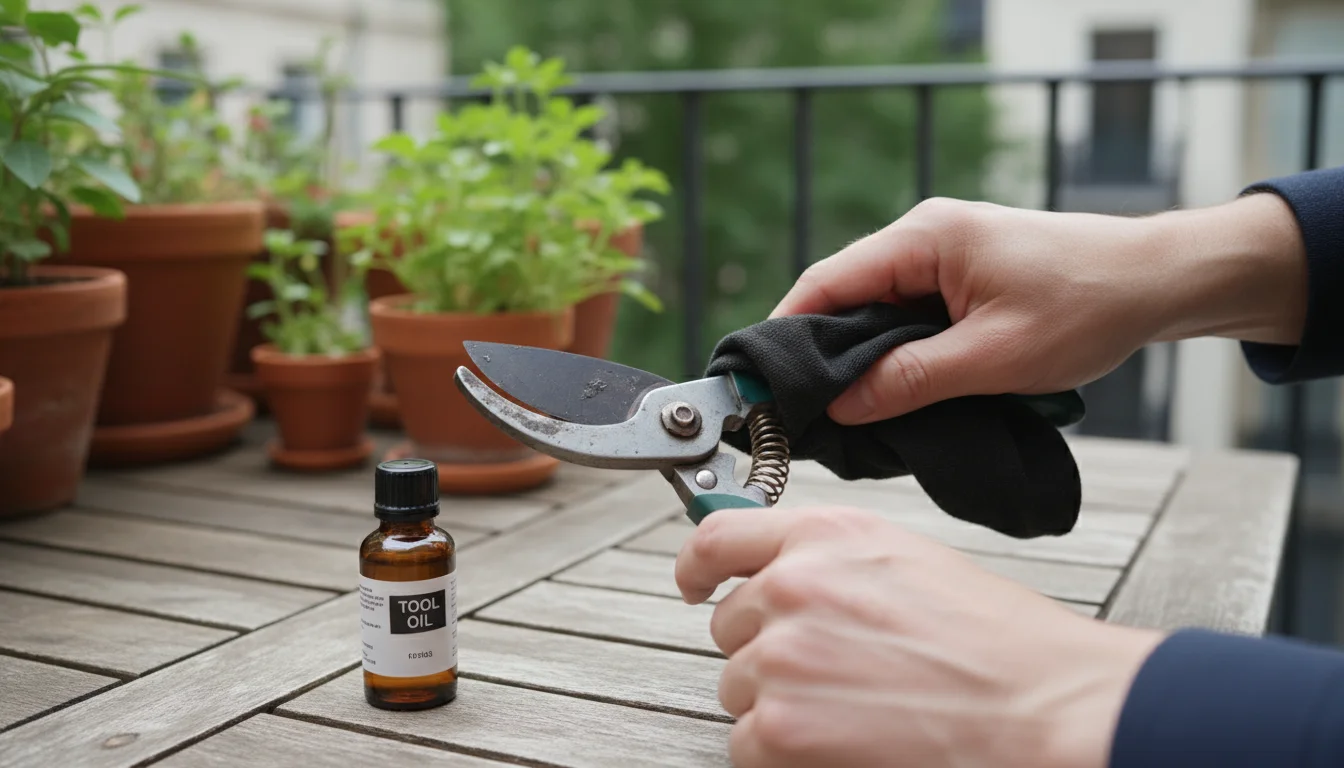
Tool Maintenance for Longevity
Proper tool maintenance extends the life of your essential gardening gear, ensures they perform effectively, and prevents the spread of plant diseases. A small investment of time in care saves you money and frustration. Here are fundamental steps for keeping your tools in prime condition.
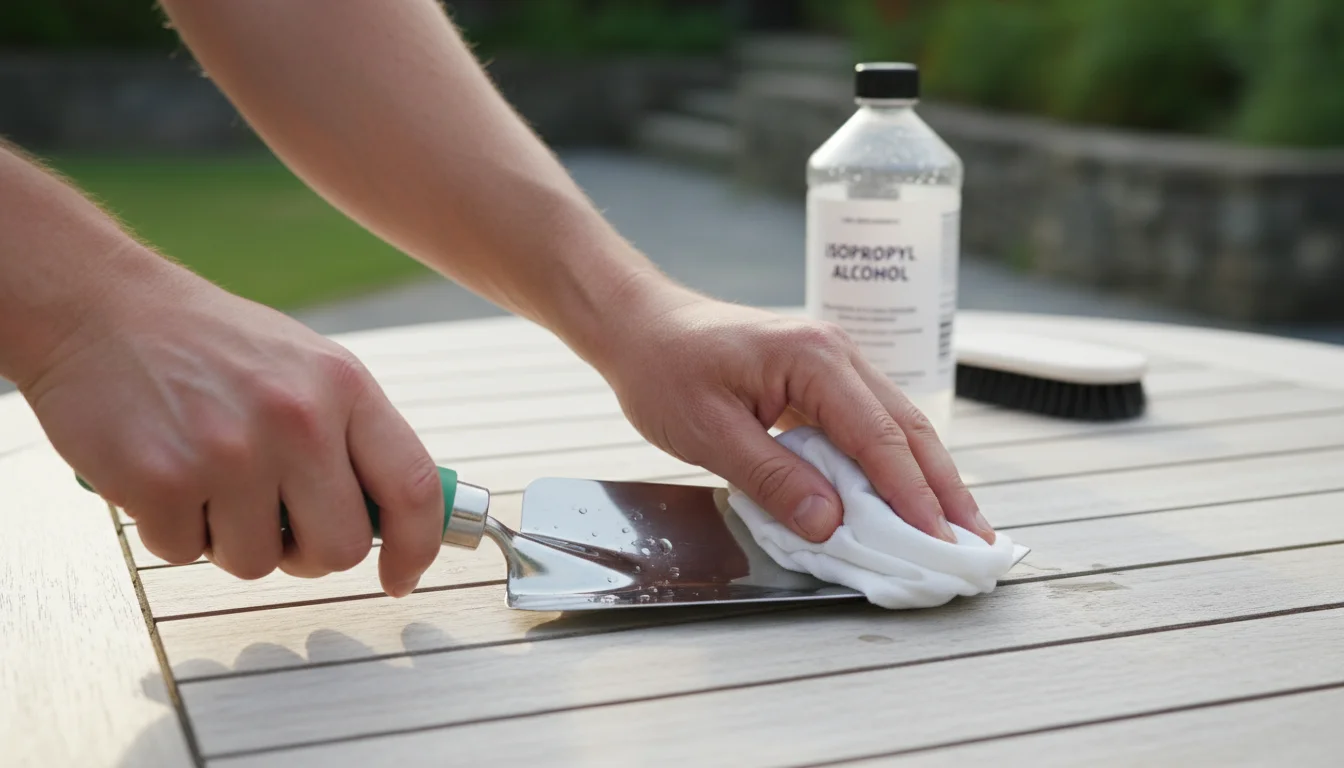
Cleaning Your Tools
Dirt and plant sap can dull blades and create rust. Always clean your tools after each use.
- Remove Debris: Use a stiff brush or an old rag to wipe off soil, mud, and plant residue from all surfaces. For stubborn sap, use rubbing alcohol or a specialized sap remover.
- Wash (if necessary): For heavily soiled tools, wash them with warm, soapy water. Use a scrubbing pad for tough grime.
- Disinfect: To prevent the spread of plant diseases, especially when pruning, disinfect blades. Wipe them down with a cloth dipped in rubbing alcohol, a 10% bleach solution (1 part bleach to 9 parts water), or a commercial disinfectant. This is crucial if you prune diseased plants. Rinse bleach-treated tools thoroughly with plain water afterward to prevent corrosion.
- Dry Thoroughly: Moisture is rust’s best friend. Ensure all metal parts are completely dry before storage. You can use a clean cloth or allow them to air dry in the sun.
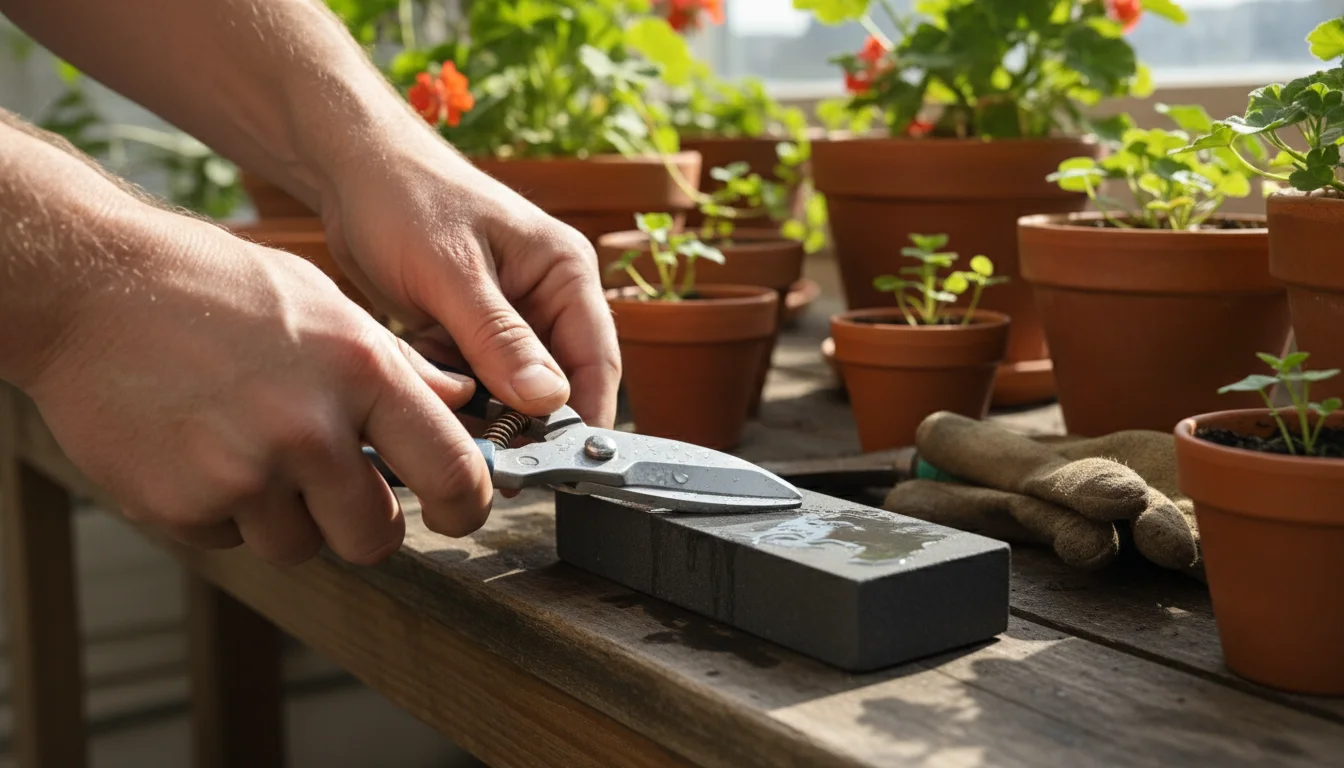
Sharpening Your Tools
Sharp blades make clean cuts, which are healthier for plants and require less effort from you. Dull tools tear at plant tissue, causing stress and making plants vulnerable to disease.
- Identify the Bevel: Most cutting tools have a single-bevel edge (one side is flat, the other is angled). You only sharpen the angled side.
- Use a Sharpening Stone or File: Hold the tool’s blade at its original angle (usually 20-30 degrees for pruners) against a sharpening stone or diamond file. Push the blade across the stone in one direction, maintaining the angle. Repeat until the blade feels sharp.
- Remove Burrs: After sharpening, a small burr (metal curl) may form on the flat side of the blade. Gently remove it by running the flat side of the blade once or twice flat against the stone or file.
- Test Sharpness: Carefully test the blade on a piece of paper or a small twig. It should cut cleanly without tearing.
Regular maintenance ensures your tools remain effective and dependable. For more detailed guidance, consider consulting reputable sources such as the Royal Horticultural Society’s tools and equipment advice or the University of Minnesota Extension’s pruning basics.
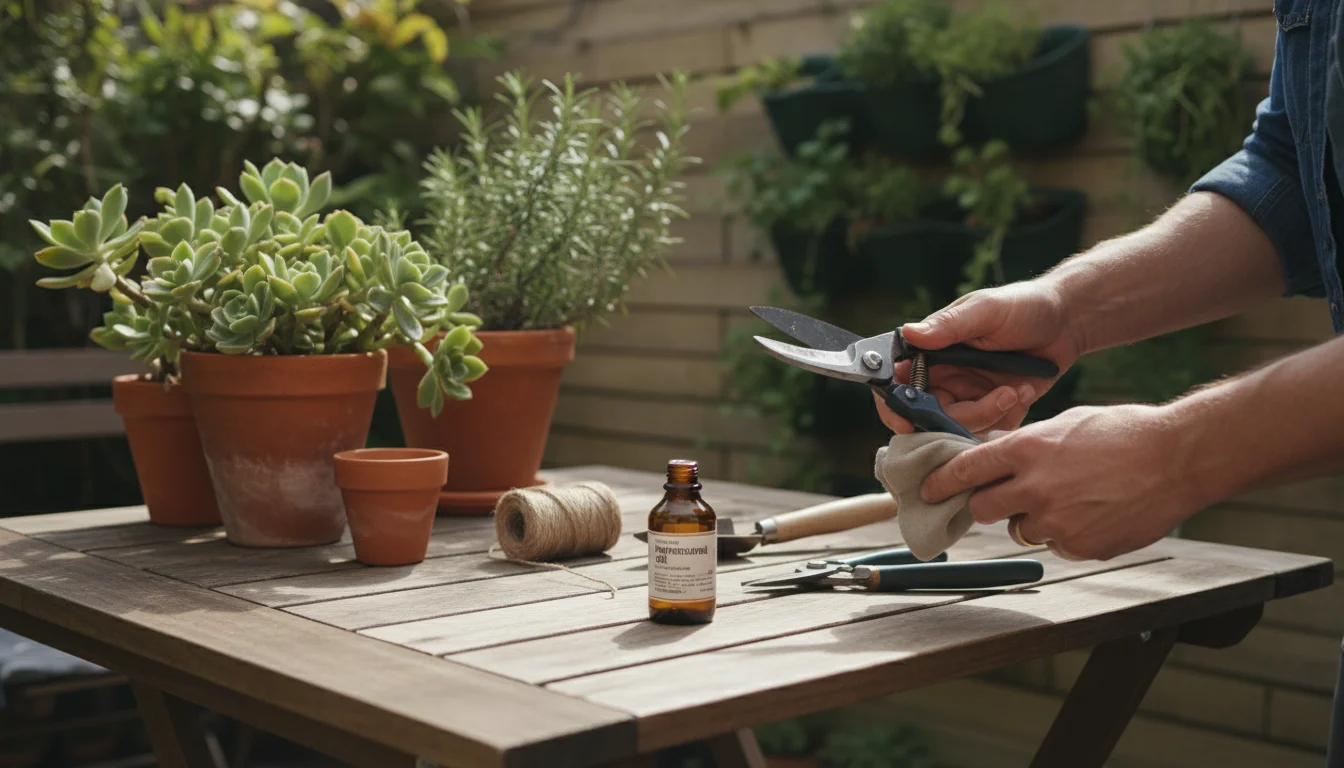
Oiling and Rust Prevention
After cleaning and sharpening, apply a light coat of horticultural oil or mineral oil to all metal parts. This protects against rust and keeps moving parts, like those on pruners, operating smoothly. For wooden handles, an occasional rub with linseed oil prevents drying and cracking.
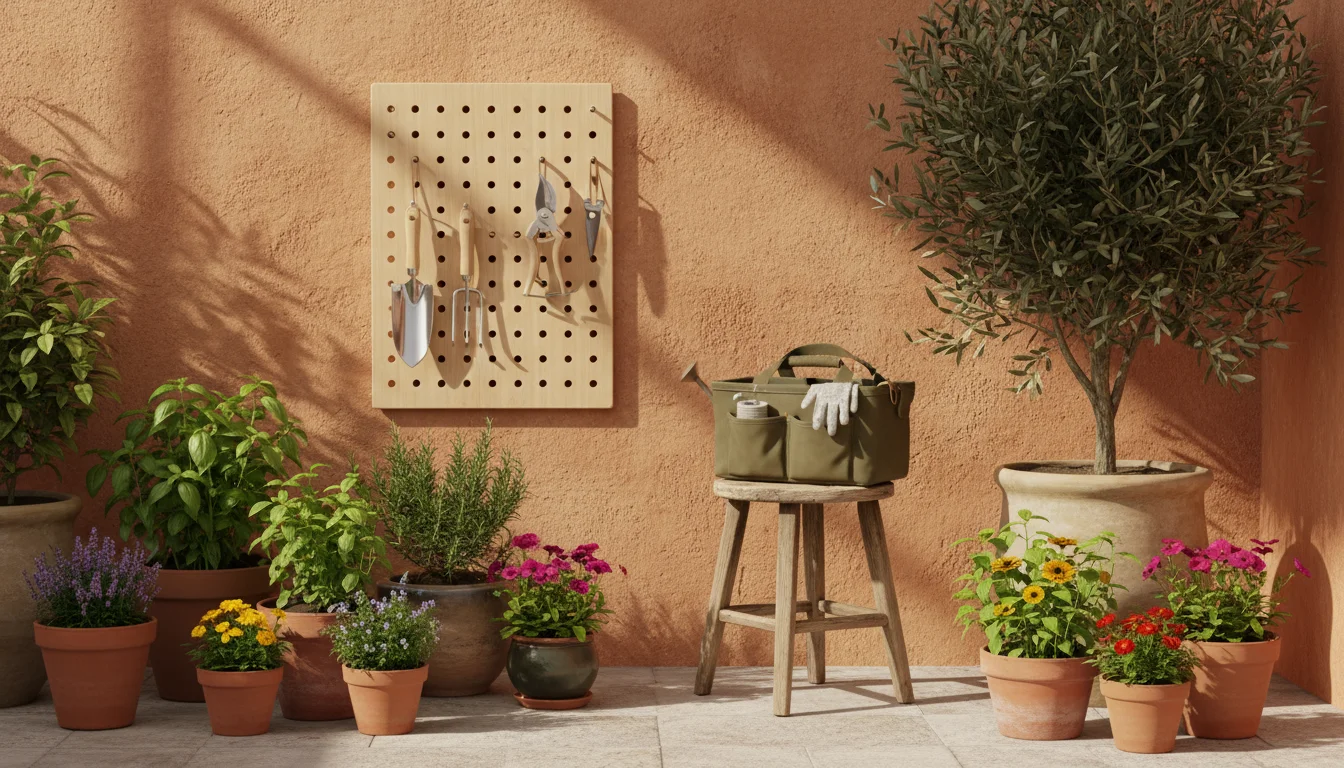
Smart Storage for Small Spaces
Maximizing space is paramount in small gardens. Thoughtful storage keeps your tools organized, protected, and easily accessible without cluttering your valuable outdoor area. Implement these strategies to keep your best garden tools in order.
- Vertical Solutions: Wall-mounted racks, pegboards, or tool holders are excellent for hanging trowels, hand forks, and pruners. This frees up floor space and keeps tools visible. Ensure hooks are sturdy and tools are hung securely.
- Container Caddies: A sturdy bucket, an old toolbox, or a canvas garden caddy with pockets serves as a portable workstation. You can keep your most-used hand tools together and carry them easily from one container to another. This also keeps tools from getting lost.
- Folding Gear: While few gardening tools fold, look for items like foldable kneelers or small collapsible buckets if you need extra utility items.
- Repurpose & Reuse: Old plastic bins or crates can store bags of soil, small pots, and less frequently used items. Stackable containers save vertical space.
- Weather Protection: Store all tools in a dry, covered area, such as a shed, garage, or even a covered balcony storage box. This prevents rust and extends tool life. Even rust-resistant stainless steel benefits from protection from the elements.
- Safety First: Store sharp tools with blades closed and locked. Hang them out of reach of children and pets. Consider blade guards for extra safety. Always follow general home and garden safety advice, such as that provided by the National Safety Council.
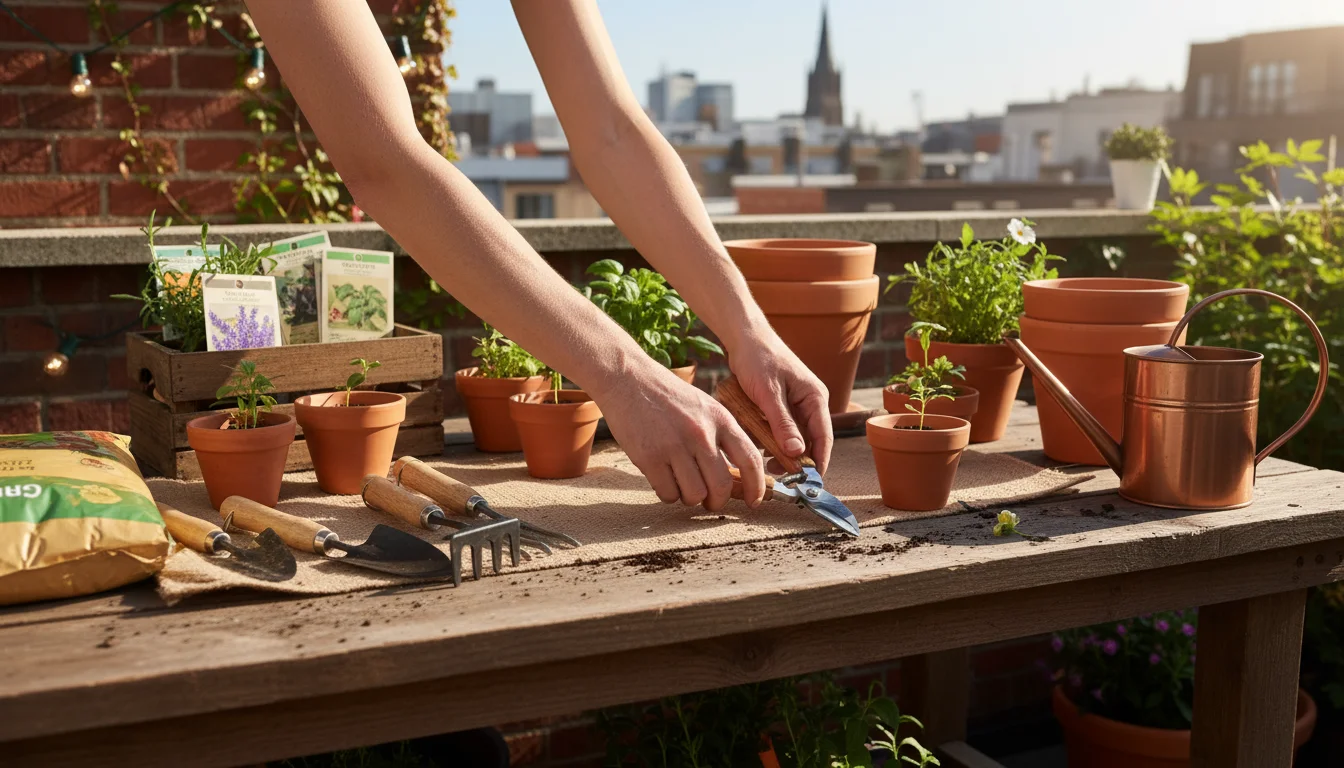
Tool-by-Task Quick Reference
This table summarizes common gardening tasks and identifies the most effective tool from your essential kit, helping you quickly grab the right item for the job.
| Common Gardening Task | Recommended Tool | Why This Tool? |
|---|---|---|
| Planting small seedlings or bulbs | Hand Trowel | Digs precise holes and moves soil efficiently. |
| Aerating compacted soil in pots | Hand Fork (Cultivator) | Loosens soil gently without root damage. |
| Removing weeds with deep roots | Weeder (Dandelion Tool) | Designed to extract taproots completely. |
| Cleaning up leaves or debris in small areas | Small Garden Rake/Hand Rake | Compact size for tidying containers and tight spaces. |
| Pruning live stems, deadheading flowers | Bypass Pruners | Makes clean cuts on live plant material up to 3/4 inch. |
| Harvesting herbs, light trimming, deadheading small blooms | Garden Snips/Herb Snips | Offers fine precision for delicate tasks. |
| Watering plants directly at the base | Watering Can | Delivers water precisely, minimizing waste and leaf wetness. |
| Misting plants, applying organic pest sprays | Spray Bottle | Versatile for fine misting or targeted application of solutions. |
| Transferring potting mix to containers | Potting Scoop/Hand Scoop | Reduces mess and efficiently moves soil. |
| Protecting hands from thorns, dirt, and blisters | Garden Gloves | Essential barrier for safety and comfort. |
| Providing comfort and protection while kneeling | Kneeler/Kneeling Pad | Reduces strain and discomfort during ground-level tasks. |
| Sweeping up spilled soil or debris | Small Brush and Dustpan | Keeps your small gardening area clean and tidy. |

Frequently Asked Questions
How often should I clean my gardening tools?
Clean your tools after every use. This prevents dirt buildup, dulling of blades, and the spread of plant diseases. Disinfect cutting tools with rubbing alcohol between different plants, especially if you notice signs of disease on any plant.
Are expensive gardening tools always better?
Not necessarily. While high-quality tools often offer better durability and performance, many affordable options serve beginners perfectly well. Focus on materials (like stainless steel for rust resistance), construction (one-piece design for strength), and comfort in your hand rather than brand name or price tag. You can build an excellent collection of essential gardening gear without breaking your budget.
What is the most important safety tip for beginners?
Always prioritize personal protection. Wear sturdy garden gloves to prevent cuts, blisters, and skin irritation. When using cutting tools, always engage the safety lock when not actively cutting and keep blades pointed away from yourself and others. Store all sharp tools securely and out of reach of children and pets. This proactive approach ensures your gardening experience remains safe and enjoyable.
Can I use multi-purpose tools instead of specialized ones?
For beginners and small spaces, multi-purpose tools can be tempting. However, specialized tools like bypass pruners or weeders perform their specific tasks far more effectively and with less damage to plants. While a trowel is versatile, relying on it for pruning can harm your plants and your tool. A core set of specialized essential gardening gear offers better results and often lasts longer.
How do I choose durable gardening tools on a budget?
Look for tools with solid construction, such as blades that extend into the handle rather than being simply riveted on. Stainless steel or forged steel blades offer superior rust resistance and strength. For handles, comfortable, ergonomic designs made from durable plastic or treated wood will last longer. Check online reviews from other small-space gardeners for insights on real-world durability and performance before purchasing your must-have tools.
